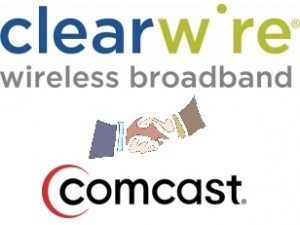 The quest for fiber-based broadband service from consumers has reached the point where many have decided to accept or decline offers to purchase property in new housing developments based on whether they’ll have access to fiber or not. Those were the findings in a study from the Fiber to the Home Council, which surveyed more than 600 existing fiber-to-the-home (FTTH) customers and 600 other broadband customers nationwide.
The quest for fiber-based broadband service from consumers has reached the point where many have decided to accept or decline offers to purchase property in new housing developments based on whether they’ll have access to fiber or not. Those were the findings in a study from the Fiber to the Home Council, which surveyed more than 600 existing fiber-to-the-home (FTTH) customers and 600 other broadband customers nationwide.
The results clearly show consumers love fiber optic broadband, far more than cable modems or DSL service from the phone company.
For example, 67% of FTTH users were very satisfied with their broadband speed compared to 58% of cable modem users and 46% of DSL users. A total of 70% of FTTH users were very satisfied with their Internet service up time compared to 64% of cable modem users and 55% of DSL users.
Consumers also reported that FTTH service was faster… much faster than competing technologies. The median tested download speed from FTTH users was 10.4Mbps. FTTH tested download speed was 51% higher than cable modem service and 593% higher than DSL (DSL has abandoned the speed war, having lost that race to competing technologies, and now prevails only on price and where other alternatives are not available).
Upload speeds offered by FTTH users blew away the competition. The average subscriber had 2.4Mbps of upload speed, which is 380% higher than cable modem users and 500% faster than DSL.
The survey also showed that robust competition, with at least one provider bringing true fiber to the home service to consumers, meant an average of six percent lower broadband bills.
Some cable and telephone industry executives downplay the lust for speed by consumers, claiming that most don’t understand the differences in speed, and don’t utilize services where speed matters most. But the FTTH survey found entirely different results. Not only are FTTH customers extremely loyal and happy with their service, they are reluctant to move to places that don’t offer it.
When asked to imagine purchasing a new home and given a list of five real estate development amenities, both current and non FTTH broadband users rated “Very high speed Internet from a direct fiber line” more important than other amenities such as green space/walking trails, 24 hour neighborhood patrol, a community pool, and a fitness center/club house. 69% of non FTTH users and 82% of current FTTH users said “Very high speed Internet” would be an important factor in buying a new home.
Even in this difficult economy, 49% of FTTH users said their broadband service would be the “last thing” they would give up. Only 11% said it would be among the first things to go.
The demand is there, but the competition is not in many American communities. Unless consumers reside in an area where an aggressive provider such as Verizon is willing to deploy fiber to the home, the chances of service arriving anytime in the near future is dismally low. Few telephone companies are interested in deploying widespread fiber networks to consumers, and most cable operators believe their existing hybrid fiber/coaxial cable networks are “good enough” for consumers. Only when a third player arrives in town, be it a private competitor or a municipally-owned fiber network, do telephone and cable providers get interested in performing their own fiber upgrades.
AT&T believes in its own copper-wire-based U-verse technology. Smaller independent telephone companies are doing only limited experiments with fiber deployment, primarily to multiple dwelling units like apartment buildings and condos, and other uniform, expansive new housing developments.
Until prevailing attitudes among providers change, consumers hungering for fiber may simply have to pack up and relocate to the lucky communities that already have it, or will soon.


 Subscribe
Subscribe



